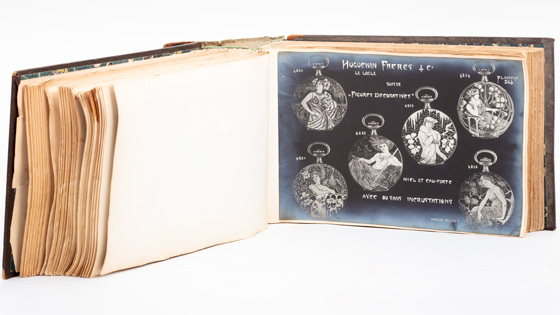
Since May 12th this year, subject to certain adaptations and restrictions imposed by the current health situation, the Musée international d’horlogerie (MIH) has reopened its doors to the public.
It has also inaugurated its New Acquisitions exhibition, on show until February 28th 2021. In addition to objects of primary historical and technical importance, the 2019 acquisitions focus on enriching the documentary collections, which often constitute, for the public, a hidden side of the museum. The new issue of the magazine Le Carillon, the annual bulletin published jointly by the MIH and the association of friends of the museum (amisMIH) was also unveiled on this occasion.
An Astro-Chron clock is the perfect complement to the 2018 acquisitions and the museum’s collection of fundamental research in the field of quartz timepieces. This rare table clock is one of the first quartz-driven models intended for private use. Developed by Junghans in the late 1950s, it was the subject of a number of patents between 1963 and 1968. Its movement is very different from what can be found inside a modern quartz timepiece: the quartz is installed in a glass cylinder and the movement features a visible electronic oscillator, thus ensuring the continuous operation of the seconds hand (an atypical feature on a quartz clock). The technology of this clock, its top-of-the-range finishes and its extremely high price at the time (785 German marks) may well have proved detrimental to its commercial success, but it is now a much sought-after object and an indisputable milestone in watchmaking history.
An equally rare but much older Italian clock was also acquired by the MIH in 2019. This iron clock, with the date 1721 engraved on the frame, has a six-hour dial. It was previously part of the prestigious Justice Warren Shepro Collection. It is particularly rare because of its small size and its minutes indication.
One much acquisition is an astronomical longcase clock donated by the St. Gallen University of Teacher Education and produced by Werner Anderegg in 1977. This master-watchmaker from Nesslau in German-speaking Switzerland represents the fifth generation of watchmakers in his family. In the course of his life, Anderegg has built 38 astronomical clocks, all of which are listed in the book titled Astronomische Uhren. Its dial represents the sky chart engraved with more than 600 stars.
From Germany to Italy via German-speaking Switzerland, an exceptional and extremely rare watch by Paul Ditisheim (1868-1945) who lived in La Chaux-de-Fonds, has now returned to the region. This timepiece was spotted in a small German auction house and is one of the greatest technical achievements of this outstanding watchmaker and scientist. It bears the number 51335 and dates from 1917/1918. This timepiece is equipped with a constant force detent escapement, based on a design by J.-Aug. Pettavel, former director of the Fleurier School of Watchmaking. It seems that this remarkable example is the only one ever made in a pocket watch format (53.7 cm in diameter).
In addition to the aforementioned objects of significant historical and technical importance, the documentary collections have been enriched, notably with an important collection of press archives from the watchmaking magazine Europa Star covering the period 1969-2019.
May 20, 2020


 News
News